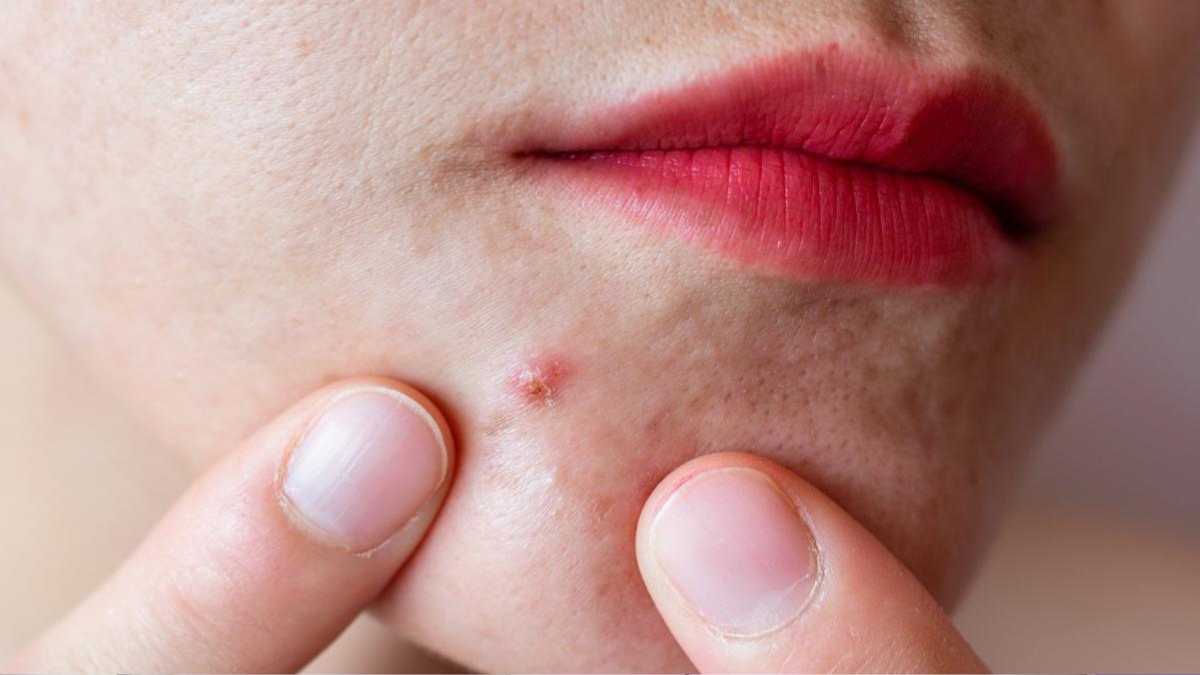A pimple encapsulated under the skin is painful. With the right advice, you can remove it quickly – but you must avoid one mistake!
A pimple encapsulated under the skin is not only unsightly, it can also be painful. Subcutaneous pimples” form when sebum, bacteria and dead skin cells accumulate in the pores, causing inflammation beneath the skin. Unlike superficial pimples, encapsulated pimples aren’t as easy to remove – but with the right advice, you can get rid of them fast.
In addition to clogged pores, ingrown hairs or folliculitis can also lead to an encapsulated pimple. Painful, reddish bumps usually disappear after a few days, but sometimes after a few weeks or months. Find out here how to remove subcutaneous pimples more quickly, and what you really shouldn’t do.
Pimples encapsulated under the skin: how to remove them
1. Never pierce subcutaneous pimples
Tempting though it may be, you should never pierce a subcutaneous pimple. As the pimple is not yet “ripe”, piercing it serves no purpose – on the contrary, it could even aggravate the inflammation. What’s more, it could spread bacteria, leading to further inflammation and even boils. So don’t touch! Two fingers spread the skin around a subcutaneous pimple. As long as the pimple is under the skin, don’t pierce it.
2. Remove subcutaneous pimples with home remedies
Fortunately, encapsulated pimples usually disappear on their own. With a few home remedies, however, you can support the healing process. Steam
A steam bath opens the pores and allows the encapsulated pimple to rise to the surface of the skin more quickly. To do this, pour hot water into a suitable container, lean your face over it from a safe distance and cover your head with a towel if necessary. If necessary, you can add dried chamomile flowers or a few drops of chamomile concentrate to the water. Chamomile has antibacterial and anti-inflammatory properties. This can speed up the healing process. Cleansing the skin
Cleanse your skin thoroughly morning and night – especially if it’s oily and prone to imperfections. Make sure you use products suited to your skin type. A poor skincare routine can quickly lead to new pimples. Peeling
Treat your skin to a daily peel to speed up the skin renewal process. This removes dead skin cells and excess sebum. In this way, the subcutaneous pimple gradually rises to the surface of the skin, where it can eventually heal.
3. Subcutaneous pimple ointment
To get rid of a pimple encapsulated under the skin, many people use an ointment. This contains antibacterial and anti-inflammatory agents to combat the inflammation and thus the cause of the subcutaneous pimple. Traction ointments also reduce sebum production by the sebaceous glands in the treated skin area.
Important: Use traction ointment sparingly, and apply it only to the affected skin area. There are many traction ointments available with different concentrations of active ingredients. So check with your doctor’s surgery or pharmacy in advance.
4. Have the pimple examined by a doctor
If the pimple is very painful, or if the inflammation is spreading, you should consult your family doctor. If you often suffer from encapsulated pimples, contact a dermatologist to find the cause. By cleansing and caring for your skin every day, you can avoid this beauty problem. And if you suffer from an encapsulated pimple under the skin, you’ll get rid of it fast with these tips!



